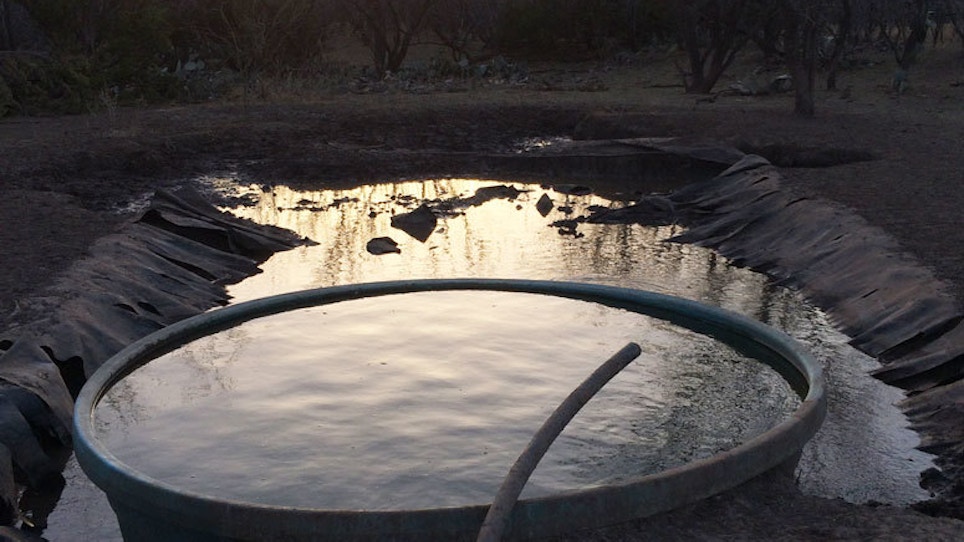Food, food and food, right? I mean, that’s the secret to killing an early-season whitetail. If you have a lush green plot and a parade of bucks is entering and exiting it on a regular basis during daylight hours, it’s a no-brainer. But what if this isn’t an option? What if you’re hunting big timber that doesn’t harbor even a small, scratched-out kill plot? Can you still skewer an early-season monster? Absolutely!
While there is much debate — even among top deer biologists — as to when and how often, the simple fact is deer need to drink. It’s a necessity of life. Yes, they obtain thirst-quenching moisture from what they eat and surely suck dew and rainfall from plants, but when early-season temperatures push the mercury above the 80-degree mark, water can be your ace in the hole.
A few seasons back, while visiting with a pair of big-woods, no-food-plot-needed whitetail gurus, I got to see firsthand just how “killer” water could be. I looked at trail cam picture after trail cam picture of monster bucks approaching a dug-out spring. It was an eye-opener. The trails going to and from the spring looked like cattle trails — you couldn’t even distinguish the tracks because the dirt was so puffed and powdery from the hoof traffic.
After talking with those hunters and figuring in the fact that most mature books inhabit a smaller range than most people think (recent QDMA research of 37 collared deer in various age classes showed an average home range of 350 acres), the wheels in my brain started turning.
A Foiled Plan
One of my favorite whitetail haunts, a 136-acre piece, parallels the Arkansas River. Yes, the deer have all the water they need. However, this past spring I took a full day to walk the entire property — something I recommend every serious whitetail hunter do during the spring and summer months — and found an isolated river crossing. We all know that river crossings can be money during the rut, but this crossing piqued my early-season interest. The crossing led to a massive sandbar, a sandbar that stood well out of the water even during high-flow periods. Over time, a small channel that ran the entire length of the sandbar had developed. It was trampled with tracks. The deer were crossing the river and stopping on the sandbar to sip the cool, slow-moving water. I hung a camera, and it was like magic. Almost every day, as bucks made their way from a distant food source back across the river to the heavy bedding cover, they stopped to drink. In addition, several times during the heat of the day I had pictures of bucks coming back across the river from the bedroom side to quench their thirst.
How did it all pan out? Sadly, I lost the property to a lease about four weeks before the opener. I was bummed, but the guys who had laid greenbacks out for the property contacted me and asked me to take them on a tour of the property. In exchange for the tour, they were going to let me hunt a doe as well as a spring turkey. On Oct. 5, one of the guys shot a 135-inch buck at my river stand at 11:45 a.m. Two days later, I shot a heavy doe.
A New Approach
My relentless door-knocking efforts finally paid off this spring, and I gained access to a 285-acre slice of whitetail paradise. The problem: Drought conditions had left each of the three ponds on the property bone dry. My remedy? It has taken some sweat equity, but I’ve installed a pair of manmade water sources — sources I have to fill via a large water tank in the back of my truck once every two to three weeks. One is a black plastic pond bottom like those available at Home Depot and Lowe’s. It took me a few hours to carve out the dirt with a shovel, but the makeshift pond now sits flush with the ground and is already being visited regularly by a number of deer. I placed it smack in the middle of a huge pinch point that deer travel through regularly.
My second water source is one I picked up at our local feed mill — a 100-gallon Rubbermaid horse tank. I didn’t bury it. I didn’t blend it in. I just keep it full, and the deer are flocking to it. I placed this tank in a small clearing in a big block of timber. My camera is already filling up with pictures. So, while food is important and can be a great way to kill an early-season buck, don’t overlook the importance of water, especially when food isn’t an option in your woods.






